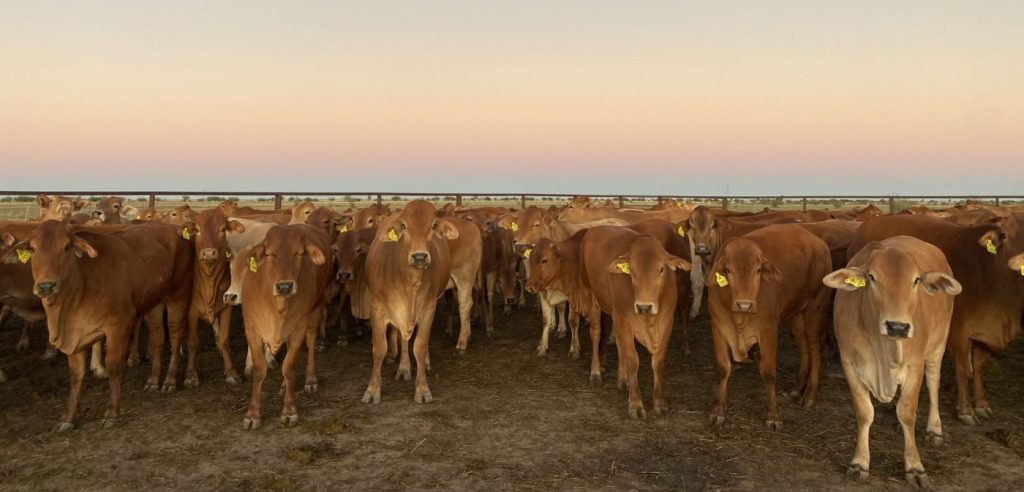Enhancing Reproductive Efficiency in Northern Australia’s Cattle Herds
Dr Prada e Silva with trial cattle
A groundbreaking five-year project aimed at enhancing reproductive efficiency in Australia’s far northern cattle herds is now sharing its promising findings.
The Calf Alive project, directed by The University of Queensland and backed by Meat & Livestock Australia, Feedworks, and the Department of Primary Industries, is set to address the challenges facing the northern cattle industry at an upcoming conference in Longreach from November 4-6.
Key Insights from the Project
Project lead Associate Professor Luis Prada e Silva emphasized the project’s significant contributions to understanding complex industry issues.
“Our findings reveal that during low pasture conditions, strategic prepartum supplementation can enhance pregnancy rates by 10 to 15 percent, improve calf survival by 5 percent, and increase weaning weights by 7 kilograms,” said Dr. Prada e Silva.
The supplementation strategy involved yeast extracts, proteins, and essential nutrients aimed at boosting colostrum quality, milk delivery, and providing the cow with critical nutrition during her demanding prepartum period.
Long-Term Benefits of Targeted Feeding
“Even small improvements in reproductive efficiency can result in significant long-term productivity and profitability benefits,” Dr. Prada e Silva explained. “By utilizing targeted feeding strategies, cattle are better equipped to cope during challenging seasons, reducing the need for producers to retain unproductive breeders and alleviating pressure on fragile northern pastures.”
Exploring Nitrogen Efficiency
The research team also investigated nitrogen isotopes in tail hair to assess cows’ protein utilization efficiency.
“We hypothesize that animals that efficiently use nitrogen contribute more nutrients to milk, enhancing the survival chances of their calves,” Dr. Prada e Silva remarked.
The ongoing Calf Alive project highlights tail-hair nitrogen testing as a practical, low-cost tool for producers to identify efficient breeders for better selection decisions.

Trial cattle involved in the Calf Alive project
Collaboration is Key to Success
Senior Research Assistant Gemma Somerset highlighted the importance of producer collaboration in the Calf Alive project’s achievements.
“We’ve collaborated with 14 different properties, ranging from Katherine in the Northern Territory to South East Queensland, fostering essential relationships that allowed us to integrate into their operations over time,” Ms. Somerset shared.
This close collaboration facilitated data collection and trials of nutritional supplements, enriching the project experience for all involved.
Future Directions
Dr. Prada e Silva believes that the insights gained from the Calf Alive project will empower producers to make informed decisions about supplementation and herd management, ultimately enhancing resilience in their herds.
“By addressing both management and biological factors related to calf loss, the project aims to bridge the gap in reproductive efficiency within northern beef systems and promote sustainable productivity advancements,” he concluded.
Conference Registration and Support
- Calf Alive receives funding from MLA, UQ, Feedworks, and the Department of Primary Industries, supported by the Northern Breeding Business (NB2) and Northern Australia Beef Research Council.
- Interested attendees can register for the conference here.
The Queensland Alliance for Agriculture and Food Innovation is a research institute at The University of Queensland, established with and supported by the Department of Primary Industries.
This markup provides a structured HTML article that can be easily integrated into WordPress, complete with proper headings, images, and paragraphs. The content has been reformulated for originality and clarity.



